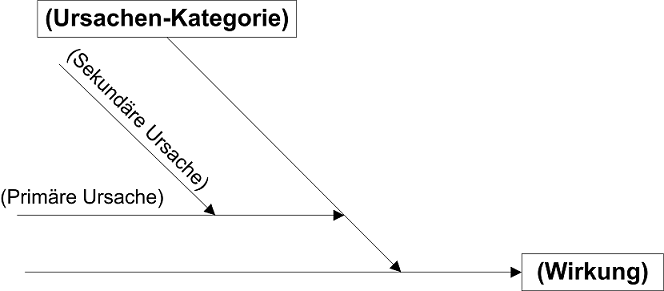

Tom College, Erie PA, Advanced Analytic Techniques Course Source Reliability Rating: 37.6 (Medium Credibility) The author also worked for the institute of manufacturing at Cambridge University and the Cranfield University, where he managed hundreds of business improvement projects. The author is a subject matter expert in continuous process improvement having worked in the automotive industry for 20 years, implementing lean manufacturing, six sigma, Quality Management, TQM, and TLA.

These were mother nature (m-vironment) and measurement. manpower, methods, machines and materials and went on to highlight what were sometimes considered the 5th and 6th M’s. The most informative thing about this source was that the author went beyond the traditional 4 M’s of the Ishikawa Diagram e.g. The source contained many visuals and an embedded video which was moderately helpful, however the pictures were not presented clearly or explained and the textual information throughout the source was too vague to really get a clear grasp on the technique. The potential causes normally being generated through a brainstorming exercise either directly onto the diagram or as a separate exercise that is then organized within the Fishbone Diagram framework.Ĭompared to previous sources, this source was inadequate. The “bones” coming from each direction on the spine of the fishbone are where you organize your potential causes. This Effect then is placed at the head of your fishbone diagram as the effect that your looking for potential causes for. For example you may have conducted your data collection on your factory floor and found that the biggest reason for rejects in your molding shop is “short shots” of material. The main aim of the use of the Ishikawa Diagram is to identify and organize the potential causes of an effect. Once the cause of the problem is recognized, determine how analysis will be conducted. Each cause identified should be fully explored for further more specific causes which, in turn, contribute to them.Ĥ.Continue this process of branching off into more and more directions until every possible cause has been identified.ĥ. Write in all the detailed possible causes in each of the broad areas of enquiry. Identify all the broad areas of enquiry in which the causes of the effect being investigated may lie.ģ. Then, draw an arrow too the problem long enough to support multiple “cause” nodes.Ģ. The fishbone diagram was invented by Kaoru Ishikawa to try to organize problems solving teams thinking, hence the name Ishikawa diagram after its inventorġ.Identify the main problem and write it down. Essential step in continuous process improvement.Helps user analyze data and direct resources towards a solution to a problem.Gives user the opportunity to visualize cause and effect.The major purpose of this source is to discuss “why” one would choose to utilize a cause and effect or Ishikawa Diagram to solve a problem, what type of problem it can answer and also techniques to analyze the results in order to generate continuous process improvement.
#Ishikawa diagram machine vs material how to#
However deciding how to solve your root cause may require you to undertake a whole new brainstorming and fish bone diagramming session this time looking at different methods to solve the problem that you have highlighted rather than identifying the root cause.Ishikawa Fishbone Diagram: Continuous Process Improvement Cause and Effect. The important thing however it to solve all of them so that your problem is removed. Your analysis of your potential causes may direct you to one specific reason for the problem you are experiencing or it may point you at a whole handful or more reasons. Thus you canĭrive continuous process improvement. Passes to see how actions taken affect the problem in question. The team first implementing those actions thatįishbone diagram and the data can be revisited on a regular basis as time These actions can then be rated against both their ease of implementation and

Stage is to look at the remaining “hot” causes and define actions to resolve them


 0 kommentar(er)
0 kommentar(er)
